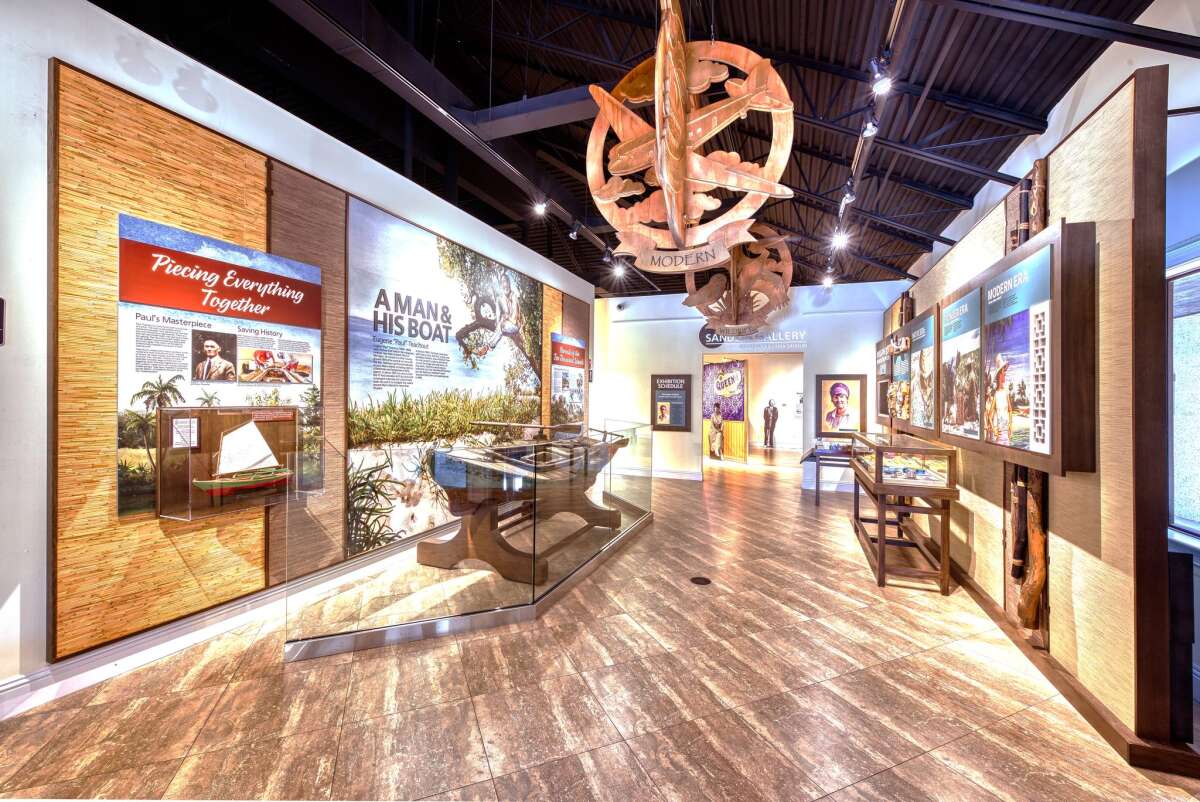Save on Fees and Experience Professional Service
MARCO ISLAND
IDEA DRIVEN VACATIONS
Search for Travel Guides, News, Events, Special Interests, and More!
-
Activities and Interests
Uncover fun activities and special interests for your upcoming trip
-
Event Travel
Plan your trip around concerts, festivals, and special events worth traveling for
-
Attractions
Explore top landmarks, scenic spots, and can't-miss local highlights
-
Travel Guides
Navigate each location like a local with our detailed travel guides
-
Travel News
Stay updated with the latest travel trends and vacation rental tips
-
Trip Ideas
Find inspiration for your next getaway with curated trip suggestions and themes
-
Travel Newsletter
Join our newsletter for exclusive travel insights, featured destinations, and trip planning tips
TRENDING
Akumal Mexico Travel Guide and Villa Rentals
Akumal Yucatan Peninsula
Canoeing on Vacation - Find a Place to Stay
by Find Rentals
Killington Vermont Travel Guide
Killington Vermont
Boone North Carolina Travel Guide
Boone North Carolina
Wild Willy's Adventure Zone Fort Walton Beach
Fort Walton Beach Florida
Marco Island Historical Museum

The Marco Island Historical Museum provides an in-depth look into the island's rich history. You'll explore artifacts from ancient Calusa Indian settlements, showcasing their craftsmanship and societal structures. Pioneer settlements highlight early settlers' resilience and community development efforts. Modern exhibits use interactive technology, including digital screens and augmented reality, to bring history to life. Notable displays like the Key Marco Cat offer insights into the Calusa culture. Located on Heathwood Drive, the museum blends modern design with historical elements, serving as a cornerstone of local heritage. Keep exploring to uncover more about its tailored tours and educational programs.
History of Marco Island
Marco Island's history dates back thousands of years, with evidence of early Calusa Indian settlements providing a glimpse into its ancient past. Archaeological discoveries on the island have unearthed a treasure trove of historical artifacts that speak volumes about the indigenous traditions of the Calusa. These findings include intricately crafted tools, pottery, and remnants of shell mounds, which illustrate the advanced craftsmanship and societal complexity of these early inhabitants.
You'll find that the preservation of these cultural assets is essential not only for understanding Marco Island's rich history but also for safeguarding the legacy of its indigenous people. Historical artifacts recovered from various digs are meticulously cataloged and displayed in the Marco Island Historical Museum, offering you a tangible connection to the island's distant past.
The focus on cultural conservation ensures that future generations can appreciate and learn from these ancient traditions. It's through these ongoing efforts that the stories and lifeways of the Calusa are kept alive, providing invaluable insights into their sophisticated society. By studying these archaeological discoveries, you gain a deeper appreciation for the resilience and ingenuity of the island's original inhabitants.
The Marco Island Historical Society
Fearing the permanent loss of our unique antiquities and history a group of concerned citizens of Marco Island formed the Marco Chapter of the Collier County Historical Society in 1994. In 1996 that group became the independent Marco Island Historical Society. This small core group of visionaries has grown into a 500 member society.
Working diligently to promote and protect the history of our island the Society was able to build the current three buildings now known as the Marco Island Historical Museum complex. These buildings were deeded to Collier County in 2010. In partnership with the Collier County Commissioners a vibrant and lasting cultural center and museum has been created to provide a place for children, professionals, tourists, and the general public to study, research and learn about the lively history, culture, art, industry and science that have contributed to today’s Marco Island.
In addition MIHS has developed programs to provide lectures, field trips, cooperative involvement with the public and private schools and participation in archeological digs.
Calusa Indian Heritage
The Calusa Indian Heritage is characterized by a sophisticated society known for its intricate craftsmanship, advanced political structures, and extensive trade networks. You'll find that the Calusa were not just mere hunter-gatherers; they were a dominant maritime culture with a complex social hierarchy. Archaeological findings have unearthed cultural artifacts that include intricately designed tools, pottery, and shell mounds, which provide evidence of their advanced skills.
The Calusa also engaged in traditional ceremonies and indigenous practices that were integral to their cultural identity. These ceremonies often involved elaborate rituals and dances, underscoring their spiritual connection to nature and their ancestors. The presence of such practices indicates a highly organized society with established traditions passed down through generations.
Pioneer Settlements
As you examine the pioneer settlements on Marco Island, you'll find that early settlers faced numerous challenges, including harsh weather conditions and limited resources. Evidence suggests that their community development efforts were pivotal in overcoming these obstacles, leading to the establishment of essential infrastructure. Analyzing these efforts provides insight into the resilience and adaptability of the island's first inhabitants.
Early Settler Challenges
Early settlers on Marco Island faced significant obstacles, including isolation, harsh weather conditions, and limited resources. These challenges demanded high levels of settler resilience and survival skills. Isolation meant that communication with the outside world was difficult, limiting access to essential supplies and support. Harsh weather conditions, such as hurricanes and extreme heat, further compounded these difficulties, testing the settlers' ability to persevere.
Adaptation and innovation were pivotal for the settlers' survival. They had to develop new methods for building sturdy shelters that could withstand the elements. For example, the use of local materials like palm fronds and cypress wood demonstrated their ability to innovate with what was available. Additionally, settlers relied on fishing, hunting, and rudimentary agriculture to secure food sources, often creating makeshift tools and techniques to enhance their efficiency.
The lack of modern amenities forced them to become self-sufficient, cultivating a sense of independence and freedom. By analyzing historical accounts and archaeological findings, it becomes evident that these early settlers were not merely surviving but actively adapting and innovating to carve out a sustainable existence. Their resilience and ingenuity laid a foundation that would eventually support future community development efforts.
Community Development Efforts
In examining the community development efforts of pioneer settlements on Marco Island, it's clear that strategic planning and collaboration were essential for overcoming the myriad challenges faced. Early settlers understood that individual ambition alone wouldn't suffice; instead, they leveraged collective action to build a resilient community. Preservation efforts were pivotal, as the cultural significance of the island's heritage needed to be safeguarded. This led to the formation of various community-driven initiatives aimed at maintaining historical landmarks and natural habitats.
Community involvement played a vital role in these endeavors. Residents participated in restoration projects that sought to revive historic structures, ensuring that future generations could appreciate the island's rich history. These projects weren't merely about physical restoration; they also aimed to cultivate a sense of shared identity and pride among the island's inhabitants.
Empirical evidence suggests that such collaborative efforts not only preserved the cultural fabric but also promoted sustainable growth. The island's development strategy focused on balancing modern needs with historical preservation, thereby fostering an environment where the past and present could coexist harmoniously. Through these efforts, Marco Island serves as a model of how strategic, community-led initiatives can achieve enduring, meaningful results.
Transformation Over Time
You'll notice that the museum has undergone significant changes from its early beginnings to its current state. Originally focused on preserving pioneer artifacts, it now features modern exhibits and has seen extensive renovations to enhance visitor experience. Analyzing these transformations reveals the museum's commitment to both historical preservation and contemporary relevance.
Early Beginnings and Evolution
The Marco Island Historical Museum, originally a modest local initiative, has undergone significant transformations to become a cornerstone of the community's cultural heritage. Its origins trace back to the community's desire to document and preserve its rich history, which began gaining traction with notable archaeological discoveries in the area. These findings underscored the importance of cultural preservation, prompting local historians and archaeologists to advocate for a dedicated space to house and exhibit these invaluable objects.
Early efforts focused on collecting historical artifacts that shed light on the island's past, from its indigenous Calusa inhabitants to the more recent settlers. As the collection grew, so did the need for a facility that could both protect and showcase these items. The architectural significance of the museum's design lies in its ability to blend seamlessly with the local environment while providing a secure, climate-controlled space for preservation.
Through community engagement and the support of local organizations, the museum evolved from a small, informal collection to a professionally managed institution. This transformation not only safeguards the island's history but also educates and inspires future generations. The museum's journey reflects a broader commitment to protecting cultural heritage, ensuring that Marco Island's story is accessible to all.
Modern Exhibits and Renovations
Modern displays at the Marco Island Historical Museum exhibit a meticulous selection of artifacts, reflecting the institution's dedication to historical precision and educational significance. These exhibitions have undergone significant changes over time, incorporating contemporary interactive technology to enrich visitor involvement. By utilizing digital screens and touch panels, you can explore more deeply into the island's rich past, making your visit not only informative but also enthralling.
The museum's renovation endeavors have focused on creating immersive encounters. You are no longer just a spectator; you become part of the historical narrative. For example, augmented reality (AR) sessions enable you to view artifacts in their original settings, effectively connecting the past with the present. The table below outlines key characteristics of the modern displays:
These advancements have turned the museum into a vibrant setting where history comes to life. You will discover that by incorporating modern technology, the Marco Island Historical Museum not only conserves history but also makes it accessible and captivating for all visitors.
Notable Exhibits
Among the Marco Island Historical Museum's most notable displays, the Key Marco Cat stands out as a significant artifact, offering a glimpse into the island's ancient Calusa culture. This small, wooden feline sculpture embodies intricate artistic interpretations and serves as a tribute to the Calusa's sophisticated craftsmanship. As one of the many cultural artifacts unearthed in the late 19th century by anthropologist Frank Hamilton Cushing, the Key Marco Cat offers invaluable insights into the spiritual and daily lives of the Calusa people.
The museum also features displays that highlight the architectural significance of Marco Island's historical structures. These exhibits include detailed models and photographs that capture the evolution of local traditions in building practices. For instance, the display on the iconic 'chickee' huts showcases the ingenuity of the Calusa in adapting to the coastal environment, using materials readily available in their surroundings.
Interactive Displays
In addition to its static exhibits, the Marco Island Historical Museum offers interactive displays that engage visitors in hands-on learning experiences about the island's rich history and cultural heritage. These displays provide an immersive way to connect with the past, making the museum visit both educational and engaging.
You'll find several hands-on experiences that encourage active participation. For instance, digital simulations allow you to explore ancient Calusa villages or navigate early maps of the island, providing a more nuanced understanding of historical contexts. These simulations are designed to be user-friendly, guaranteeing that individuals of all ages can easily engage with the content.
The museum also features other immersive exhibits, such as touch screens and augmented reality stations, that offer interactive learning opportunities. These tools make it possible to delve deeper into specific aspects of Marco Island's history without feeling constrained by traditional displays. By providing a range of interactive options, the museum ensures that you can customize your experience according to your interests and learning preferences.
Educational Programs
The Marco Island Historical Museum offers a variety of educational programs designed to deepen your understanding of the island's history and culture. These programs are carefully crafted to provide both engagement and enlightenment, guaranteeing you gain a thorough appreciation of Marco Island's rich heritage.
-
Hands-on Workshops: These interactive sessions allow you to engage directly with historical artifacts and techniques, fostering a tangible connection to the past. Through these workshops, you'll experience history in a practical, immersive way.
-
Virtual Tours: For those who prefer flexibility, the museum offers virtual tours. These digital experiences provide an in-depth look at exhibits, making it possible to explore the museum's offerings from anywhere in the world.
-
School Programs: Tailored to various educational levels, these programs align with curricular goals and inspire young minds. They incorporate interactive elements to make learning about Marco Island's history both informative and enjoyable.
-
Community Outreach: The museum extends its educational reach beyond its walls, engaging with the local community through lectures, presentations, and collaborative events. This approach guarantees that the island's history is accessible to a broader audience.
Each of these programs provides diverse avenues for exploration, allowing you the freedom to choose how you wish to engage with Marco Island's storied past.
Museum Location
You'll find the Marco Island Historical Museum strategically positioned on Heathwood Drive, providing convenient access for both residents and visitors. This location is ideal, not only because of its centrality but also due to its proximity to various nearby attractions. The museum's architecture, blending modern design with historical elements, complements its mission to preserve Marco Island's cultural significance.
An analytical view reveals that the museum's placement is intentional, enhancing its role as a cornerstone of local heritage. Heathwood Drive connects easily to major roads, facilitating high visitor turnover and making it an integral part of the community's daily life. This accessibility underscores the museum's commitment to preservation efforts by inviting a consistent flow of people interested in exploring the island's rich history.
Additionally, the museum's architecture serves as a visual representation of Marco Island's evolution, effectively bridging past and present. The surrounding area, including parks and other cultural sites, makes it a hub for educational and recreational activities. This strategic location magnifies the museum's impact, ensuring that the stories and artifacts it houses remain a living part of the community's collective memory and cultural significance.
Visitor Information
Visiting the Marco Island Historical Museum offers priceless insights into the island's cultural heritage, supported by well-curated exhibits and knowledgeable staff. When you arrive, you'll find a variety of visitor amenities designed to enhance your experience. The museum offers guided tours that provide deeper context and understanding of the exhibits, ideal for those who wish to explore beyond surface-level information.
To make certain a smooth visit, consider the following:
-
Hours of Operation: The museum is open Tuesday through Saturday, from 9 AM to 4 PM. It's closed on Sundays, Mondays, and major holidays, so plan accordingly.
-
Admission Fees: Entry is free, but donations are encouraged to help sustain the museum's operations and educational programs. This allows you the freedom to explore without financial constraints.
-
Amenities: On-site facilities include restrooms, a gift shop, and wheelchair accessibility. These services guarantee a comfortable and convenient visit for all guests.
-
Guided Tours: Available upon request, guided tours can be customized to your interests. The knowledgeable guides provide detailed narratives that enhance your understanding of Marco Island's history.
Vacation Rental Management Companies in Marco Island Florida

For over 35 years, the Clausen family has been offering the finest Marco Island and Naples Vacation Rentals. We run our business with pride and strive.. learn more
Vacation Rentals in Marco Island Florida
Additional Marco Island Articles
Marco Island Center for the Arts
Marco Island Florida
Marco Island Seafood And Music Festival
March -
Marco Island Florida
Isle of Capri Marina In Marco Island Florida
Marco Island Florida






















